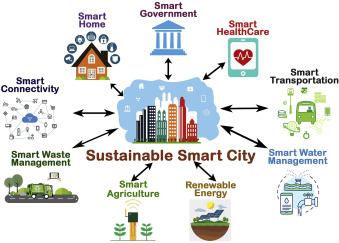Articles and Trivia
Write an articleSustainable Smart City

Smart Cities: Can They Truly Be Sustainable?
As the world’s population continues to grow and urban areas expand, the idea of smart cities has emerged as a promising solution for managing resources efficiently, improving living standards, and ensuring environmental sustainability. But while smart cities promise a better future, the question remains — can they truly be sustainable?
What Are Smart Cities?
Smart cities use technology, data, and innovation to improve urban life. Through sensors, data analytics, and interconnected systems, they aim to optimize everything from traffic management and waste disposal to energy use and public services.
The goal is simple: create cities that are more efficient, livable, and eco-friendly.
The Sustainability Promise
1. Efficient Resource Management
Smart grids, water monitoring systems, and intelligent waste management help reduce waste and promote conservation.
2. Cleaner Energy Use
Many smart cities prioritize renewable energy sources such as solar, wind, and bioenergy to reduce carbon emissions.
3. Reduced Traffic and Pollution
Smart transportation systems use real-time data to control traffic flow, encourage public transit, and reduce fuel consumption.
4. Enhanced Urban Planning
Data-driven planning allows cities to anticipate population growth and allocate resources wisely, leading to better housing, healthcare, and infrastructure.
The Challenges of Building Sustainable Smart Cities
Despite the potential, smart cities face major challenges:
-High Costs and Infrastructure Gaps: Developing smart infrastructure requires heavy investment and advanced technology—something not all cities can afford.
-Data Privacy and Security Risks: With millions of sensors collecting data, protecting citizens’ privacy becomes a critical issue.
-Digital Divide: Unequal access to technology can widen social inequality, leaving vulnerable populations behind.
-Environmental Trade-Offs: The production of electronic devices and sensors adds to e-waste, raising sustainability concerns.
Striking the Right Balance
For smart cities to truly be sustainable, technology must work with nature, not against it. This means focusing on renewable energy, circular economy models, and community involvement. Cities must also adopt transparent policies and ensure inclusivity—where every citizen benefits, not just the tech-savvy few.
Conclusion
Smart cities have immense potential to shape a sustainable future—but only if innovation goes hand in hand with responsibility. True sustainability isn’t achieved by technology alone; it’s built through collaboration, awareness, and equitable development.
A city becomes truly smart when it serves both people and the planet.


